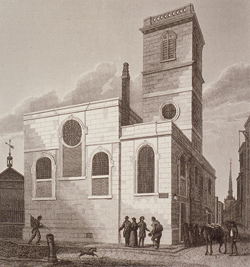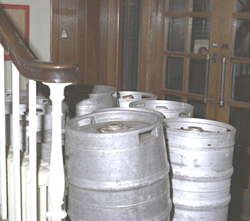Site History
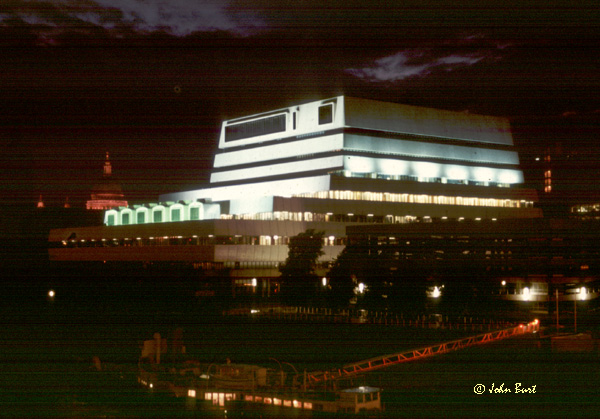 |
In the early 1970s, Mondial House was being built on the edge of the River Thames near Cannon Street Railway Station. This building was in great delay due to a number of reasons:- |
From about 1969 the site between the Thames River and Upper Thames Street, was secured for the building of Mondial House, a modern 1970s styled telephone exchange and office building which was to cater for the growing demand in international telephone calls.
The site needed to be in London, close to the cable networks and convenient for the operators and engineers who were to work there. As land is at a premium in the City, the building had to maximise floor space while retaining a stepped profile to meet the stringent planning permissions and not to obscure too much of St. Paul's Cathedral.
All Hallows the Great
The church of All Hallows the Great, on the Thames Street site, can be traced back many centuries and it is fitting that a study of the immediate area be included in pages about Mondial House.
Dowgate Fire Station (at 94-95 Upper Thames Street)
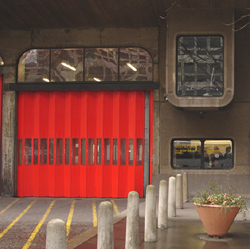 |
"The building will incorporate... |
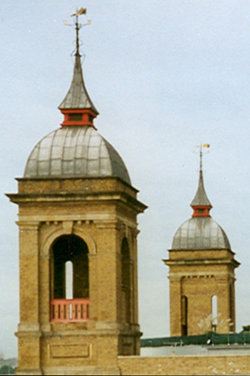 |
Cannon Street station was opened on 1st September 1866 as the terminus of the South Eastern and Chatham Railway. |
English Heritage listing: Grade II 5th June 1972
"A pair of towers formerly marking junction of train shed with bridge over Thames. Yellow brick with plain, channelled lower stage and more elaborate, open arched upper part with cornice and parapet. Square, domed roof with squat lantern and spire."
City of London Brewery
In the 1970s, some of the larger telephone exchanges had restaurant facilities which included the serving of alcohol...
"Wood Street 1 was not the only exchange to have a bar. Faraday also had one in the 5th floor restaurant."
There was a brewery next to the Mondial House site from early times when Henry Campion (of Campion Lane) owned the land.
The Regalia
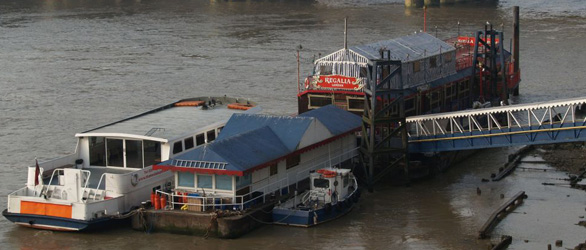 |
...And there was once a 'floating pub', The Regalia moored at Swan Pier. |
John Burt
In the early 1970s John Burt was a Senior Executive Engineer (level 3) in the International & Maritime Telecom Region of the Post Office. He was project manager for the Ericsson international switches to be installed at Stag Lane, at the time when the building of Mondial House was in delay.
See John Burt at Stag Lane.
For more background about Dowgate Ward:
The London Burial Grounds
Walbrook & Dowgate Ward in the 18th Century
All logos and trade marks are the property of their respective owners and are used on the Light Straw site(s) for review only. Students and researchers are recommended to make their own independent enquiries as to the accuracy of the information contained therein.
